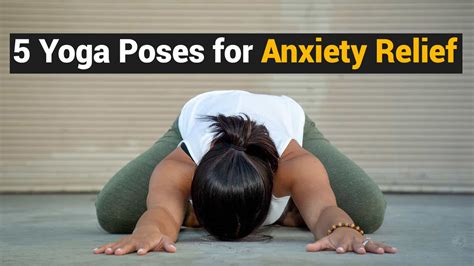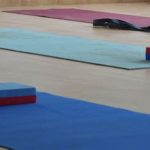Top Yoga Styles for Effective Stress Relief: A Comprehensive Guide
In a fast-paced world where stress has become a common companion for many, yoga offers a holistic approach to relaxation and mental clarity. However, with the myriad of yoga styles available, it can be challenging to identify which practices are most effective for stress relief. This guide explores the best types of yoga for stress management, examining their benefits, practical applications, and the science behind why they work.
Introduction
Yoga is an ancient practice that integrates the mind, body, and spirit. Its origins can be traced back over 5,000 years, evolving into various branches and styles that cater to different physical, emotional, and spiritual needs. In recent years, yoga has gained widespread recognition for its ability to reduce stress, enhance mental well-being, and improve physical health.
But not all yoga styles serve the same purpose. Some may energize and stimulate the mind, while others focus on relaxation and inner peace. For stress relief, it’s essential to select the right type of yoga that can offer calming benefits while easing tension in the body.
Key Concepts
Understanding the key elements of stress-relief yoga practices requires an analysis of breathing techniques, posture (asanas), and meditation practices. Key aspects include:
- Pranayama: Focused breathing techniques designed to control life force energy.
- Asanas: Physical postures that stretch, strengthen, and release tension.
- Meditation: Mindfulness and concentration exercises that calm the mind.
- Restorative practices: Sessions that allow the body to completely relax and recover.
Historical Context
While yoga’s earliest roots lie in Indian philosophy and spirituality, its modern adaptations have grown globally, particularly in Western wellness culture. The incorporation of stress-relief techniques can be linked back to Hatha Yoga Pradipika and Patanjali’s Yoga Sutras, which discuss how yoga can bring balance to the mind and body. Traditionally, yogis practiced to align their physical bodies with their spiritual goals, but the practice’s inherent relaxation techniques have proven beneficial for today’s stress-laden lifestyles.
Current State Analysis
With the rise of work-related stress, anxiety, and societal pressures, yoga has become a go-to option for many seeking solace. Studies reveal that certain types of yoga can effectively reduce cortisol levels, regulate the nervous system, and improve mood. However, not all yoga classes prioritize stress relief. This section examines the various popular styles and their relevance to those specifically seeking to unwind and de-stress.
| Yoga Type | Stress Relief Benefits | Suitability for Beginners |
|---|---|---|
| Hatha Yoga | Focuses on gentle movements and breathing, making it ideal for reducing physical and mental stress. | Highly suitable |
| Yin Yoga | Encourages deep stretching and long holds, which help release tension and quiet the mind. | Moderate |
| Restorative Yoga | Supports relaxation through passive poses, often held for extended periods using props. | Highly suitable |
| Vinyasa Yoga | Can reduce stress by synchronizing breath with movement, but faster-paced than restorative styles. | Intermediate |
| Kundalini Yoga | Incorporates breathing exercises and meditation, targeting emotional stress and energy blockages. | Intermediate |
| Iyengar Yoga | Emphasizes alignment, which can help reduce physical strain and increase relaxation. | Moderate |
| Bikram Yoga | While more physically demanding, it can offer stress relief through intense concentration and sweating. | Advanced |
| Ashtanga Yoga | Offers dynamic, structured sequences that require focus, helping to clear the mind of stress. | Advanced |
Practical Applications
Applying the principles of stress-relief yoga requires choosing the right environment, props, and postures. Creating a quiet, distraction-free space is essential. Additionally, integrating props like blocks, straps, or bolsters can support the body in deep relaxation, especially in styles such as Yin or Restorative yoga.
For best results, consistency in practice is key. Even short, daily sessions can build resilience against stress. Incorporating simple breathing techniques, such as diaphragmatic breathing (deep belly breathing), between postures can further enhance the relaxation response.
Case Studies
Several case studies highlight how yoga has been instrumental in relieving stress. For instance:
- A study conducted with corporate employees practicing Hatha yoga twice a week showed a 40% decrease in stress levels after just four weeks.
- Participants in a Restorative yoga program reported significant improvements in mood, and reduced symptoms of burnout, particularly in healthcare workers.
- A trial involving Yin yoga found that after an eight-week program, participants experienced improved sleep quality and reduced anxiety symptoms.
These case studies suggest that different yoga practices can effectively address various dimensions of stress, such as emotional fatigue, sleep disturbances, and physical tension.
Stakeholder Analysis
Stress-relief yoga benefits several groups:
- Corporate workers: Yoga offers a counterbalance to desk jobs that cause physical and mental strain.
- Healthcare providers: Regular yoga practice reduces the high levels of stress associated with medical professions.
- Parents: Yoga helps manage the emotional and physical stress of caregiving.
- Students: It can reduce academic stress, improving focus and mental clarity.
- Seniors: Yoga offers a gentle form of exercise that helps mitigate stress-related illnesses.
Implementation Guidelines
For those interested in starting a stress-relief yoga practice, here are some implementation tips:
- Select the appropriate style: Beginners may find Hatha or Restorative yoga more accessible, while those with prior experience might prefer Vinyasa or Yin.
- Create a dedicated space: Choose a quiet, peaceful area at home or attend classes in a serene studio.
- Use props: Incorporate blocks, straps, and bolsters to ease into poses and promote relaxation.
- Focus on breath: Breathing is key in yoga for stress relief. Pranayama practices such as alternate nostril breathing can calm the nervous system.
- Be consistent: Regular practice is more effective than sporadic sessions. Aim for short, daily routines rather than long, infrequent sessions.
Ethical Considerations
While yoga is widely seen as a positive practice, it’s important to consider cultural appropriation and ensure that the traditions of yoga are respected. Many stress-relief yoga practices derive from ancient spiritual practices, and instructors should acknowledge the roots of these techniques in their teachings.
Limitations and Future Research
Although yoga offers numerous benefits for stress relief, there are limitations to its universal application. Not every individual responds to yoga the same way, and some people may find certain practices triggering or physically challenging.
Future research could explore how personalized yoga programs, tailored to individual stress profiles, could yield more targeted and effective results. Additionally, research into the long-term impacts of stress-relief yoga on diverse populations—such as people with PTSD or chronic pain—would provide a deeper understanding of its benefits.
Expert Commentary
Yoga is an accessible and versatile tool for managing stress, but the key to its success lies in selecting the right style. Whether it’s the deep relaxation of Restorative yoga or the meditative focus of Yin, the ideal approach to stress relief depends on personal preferences and needs. Evidence shows that integrating yoga into daily routines can significantly reduce the physical and psychological effects of stress, but consistency and proper guidance are essential for achieving long-term benefits.








